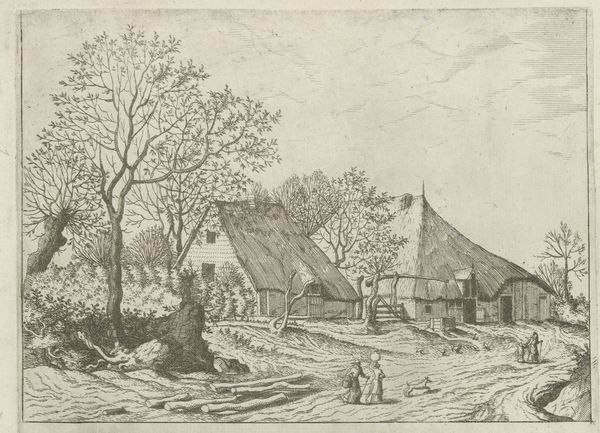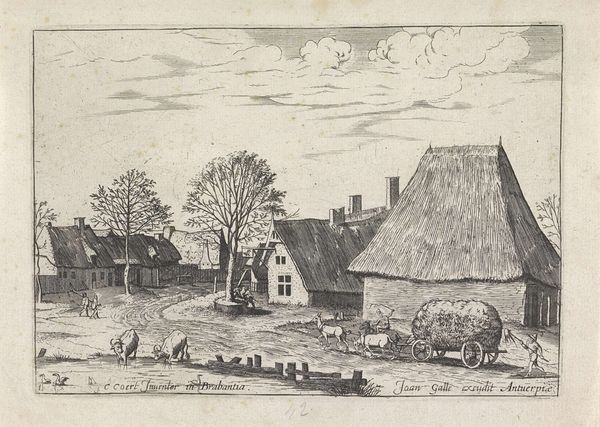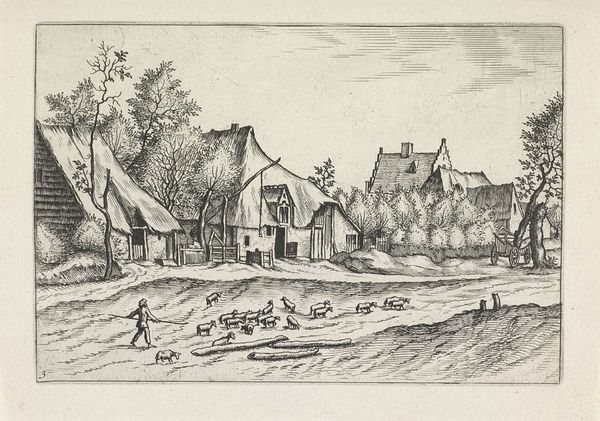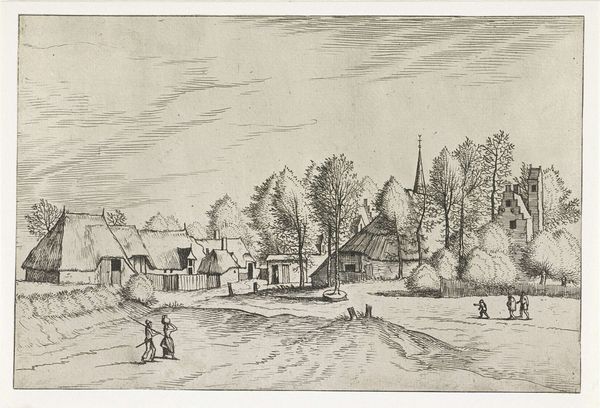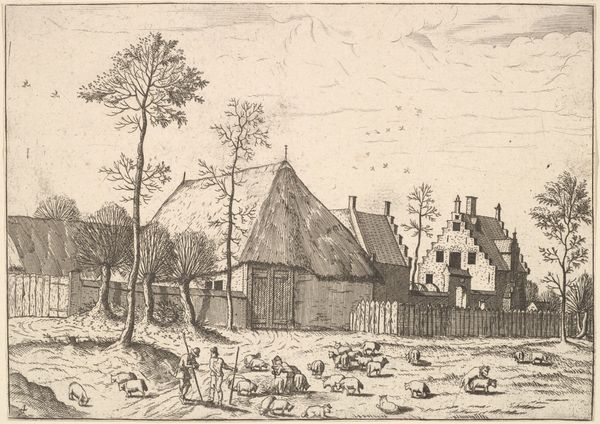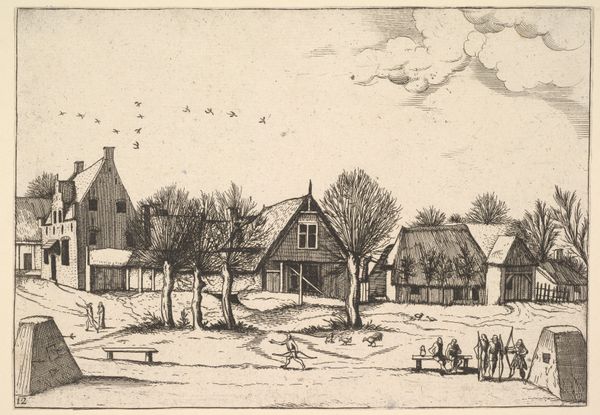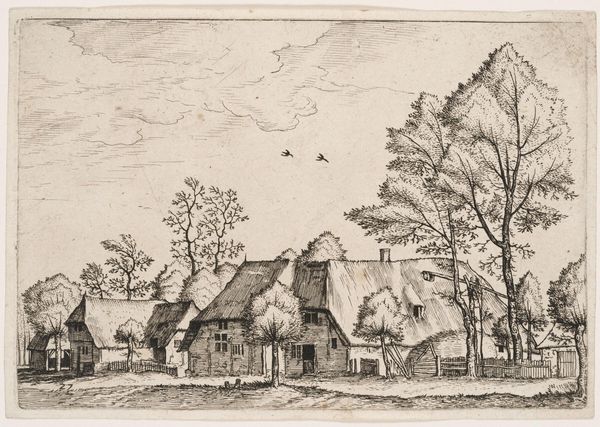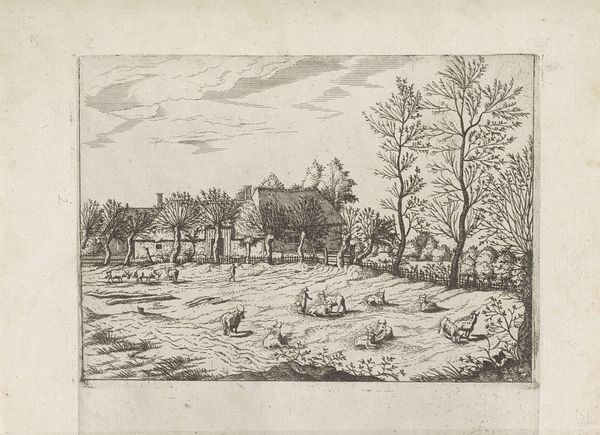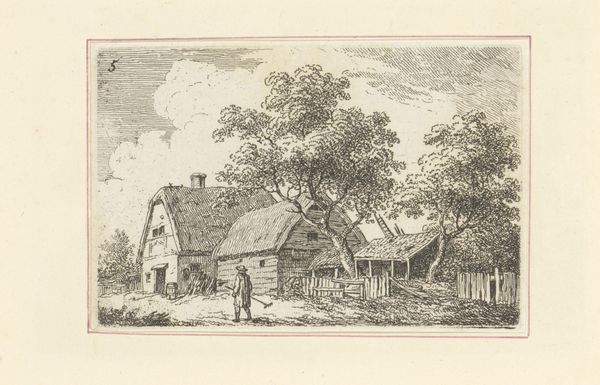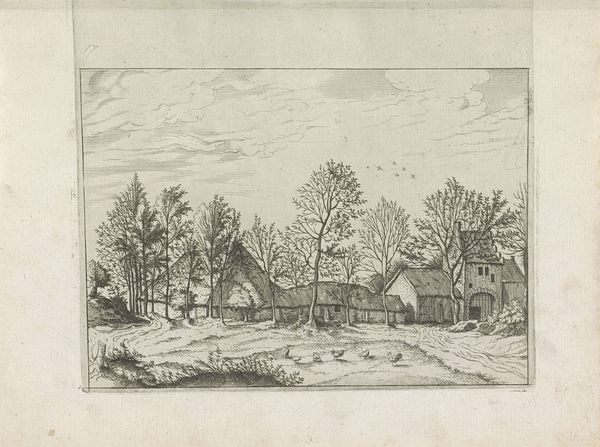
print, etching, engraving
#
dutch-golden-age
# print
#
pen sketch
#
etching
#
landscape
#
genre-painting
#
engraving
Dimensions: height 142 mm, width 197 mm
Copyright: Rijks Museum: Open Domain
Curator: Here we have “Boerderijen met waterput,” or “Farmhouses with a Well,” a print dating to before 1676. It is currently held in the Rijksmuseum. Editor: It’s quite charming, in a simple, unassuming way. The detail in the thatched roofs is remarkable, especially considering this is an etching. Curator: Attributed to Johannes or Lucas van Doetechum, it gives us a glimpse into 17th-century rural life in the Dutch Republic. Consider the labor required to create this image. Etching involved coating a metal plate with wax, then carefully drawing the design using sharp tools to expose the metal, acid, and printing press all playing vital parts. It’s a testament to the craft involved in producing images during that period, making it widely accessible as prints were easy to reproduce and sell. Editor: Absolutely. Prints like this helped to standardize images and stories, creating a shared visual culture. I think about the intended audience. These images provided views of rural life which would be important for the perception of everyday reality at the time. They provided an aesthetic of ideal Dutch land. Curator: Looking closely, you’ll see genre-painting scenes play out near the buildings, including villagers gathering around a well. Also note the prominence of a game resembling colf—a precursor to golf, indicating leisure time alongside labor. Editor: Right, these prints served as political tools by visually demonstrating the virtues of daily, local, life. The buildings themselves provide the viewer with ideas related to regional building projects. There is real social commentary through this popular genre of Dutch art that played a key role in solidifying cultural narratives. Curator: Indeed, we can also imagine the types of materials used. Those thatched roofs suggest readily available resources like straw or reeds from the countryside. What might seem simple actually reflects resourcefulness and the constraints of what's available to the craftsmen, the buildings' owners, and more broadly, the culture during this period. Editor: Well, it’s certainly given me a fresh appreciation for the history behind this slice of Dutch life! Curator: And for me, it is a good reminder of the careful methods of production. It prompts one to appreciate all labor when experiencing even simple works like this!
Comments
No comments
Be the first to comment and join the conversation on the ultimate creative platform.
